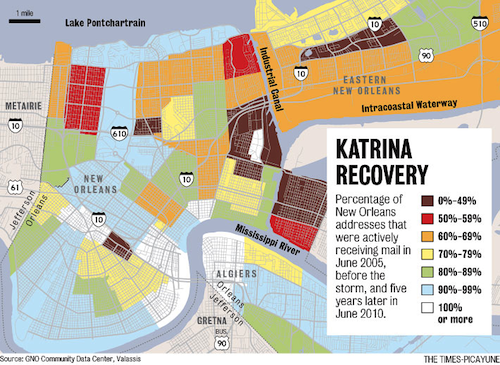Sprawl’s a big issue — one with ties to politics — so when new research comes out around it, it’s always interesting. Here’s some new stuff about areas where cities are growing faster than suburbs; overall, in 19 of the 51 largest U.S. cities, the actual city grew faster than the suburbs around it (the flip side of that would mean that 32 times, the suburbs were growing faster). The biggest example of this “city outpacing suburbs” concept was New Orleans — 2.4 growth rate for the city, 0.5 growth rate for the ‘burbs. This makes sense in the broader context of the last decade or so for New Orleans, which involved a major hurricane and a need to rebuild around the city proper.
Traditionally, you’ll see that the 19 — the city faster group — is more “knowledge centers.” On that list, you have places like Columbus, DC, NYC, Austin, Raleigh, and Boston. On the 32 list — the suburbs growing faster — you have places like Houston, Detroit, Indianapolis, Jacksonville, etc. (Although Indy is, in many ways, a knowledge center these days.) This is all tied to the real ideas around how cities tend to grow.
Here’s a graphic of the top 20 metros as relates to city and suburban growth:
There’s a lot you can say about Detroit’s urban drop-off, but you’ll probably see those numbers trend back up in the next five years.
From 2010 to 2011, there were 27 metros where the city grew faster; as we established above, that’s 19 now. So are cities declining? Not really. Across the entire decade of the 2000s, there were only five cities where city growth outpaced suburban growth. So far in the 2010s — with, granted, years to go — it’s looking like that number might be a double-digit, at the very least. Remember: the U.S. is basically 12 mega-regions anyway, and by 2050, twice the current population will live in cities. These numbers are, thus, likely to rise.

